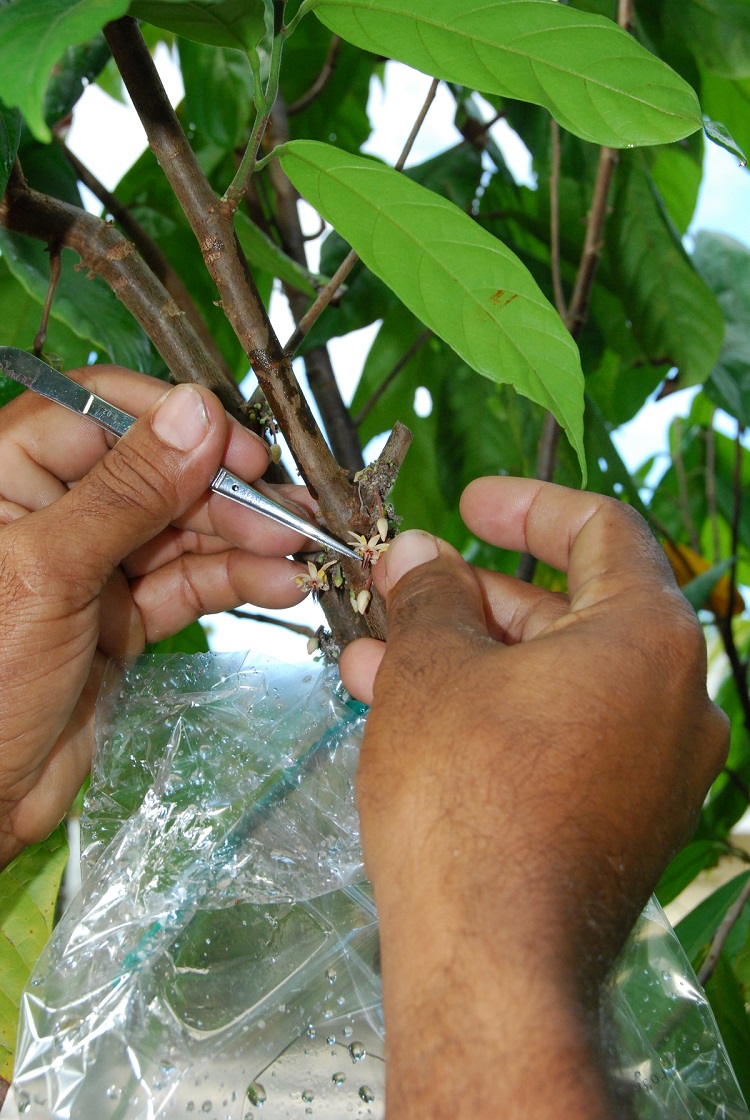Tiny midges are the pollinators of cacao flowers, from which we get cocoa beans, the raw material for chocolate. Until now, little was known about how the midges find these flowers. Together with researchers in the UK, Trinidad and Tobago, Jamaica, Argentina and Australia, NRI’s Sarah Arnold was part of a project aimed at finding out whether the scent of the flower helped the midges to find it, with the ultimate aim of understanding how to improve pollination.
 The project, known as ‘CocoaPOP’, was led by Phil Stevenson, with Steve Belmain, David Hall, Dudley Farman, and Dan Bray joining Sarah on the NRI team.
The project, known as ‘CocoaPOP’, was led by Phil Stevenson, with Steve Belmain, David Hall, Dudley Farman, and Dan Bray joining Sarah on the NRI team.
To discover the smell of the cacao flower, the researchers used specialist entrainment apparatus to extract the odours from flowering trees on farms in Jamaica and Trinidad and Tobago. The apparatus works by blowing filtered air around the flower and drawing the air sample into a tube where the chemicals responsible for the scent can be captured for later analysis.
NRI’s chemists were able to use these odour samples to build a more complete picture of the scent of the flowers than had ever previously been possible, including finding that older research had wrongly identified some of the chemicals. With this new information, they attempted to replicate the bouquet in the lab, to find out how the midges reacted to this odour.
With the help of a midge specialist in Australia, and assistance from Mr Jude Lee Sam, a Trinidadian cacao farmer, the UK and Trinidadian researchers captured live midges from cacao farms and bred them in the NRI labs – the first time these tiny insects had been bred over multiple generations in a laboratory, anywhere in the world.
This meant that NRI researchers were able to test whether the midges liked both the natural scent of cacao flowers, and the laboratory-replicated version. They seemed to like the flowers’ natural scent, though not all species, and not all the time. But they appeared indifferent to the replica scent bouquet, which lacked a few minor chemicals that are particularly hard to obtain and could be more important than previously realised in attracting midges to flowers.
Understanding how pollinators find and choose flowers can help us breed crops with more attractive flowers, and design ways to conserve them better. Now we know we can breed midges from cacao farms in the lab, there are so many more questions we can ask and hopefully improve production of cocoa. This project was co-funded by the EU’s Programme for Science and Technology with the African, Caribbean and Pacific Group of States (ACP S&T II).
Find out more about:

